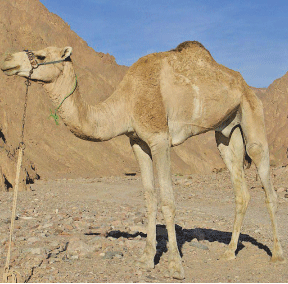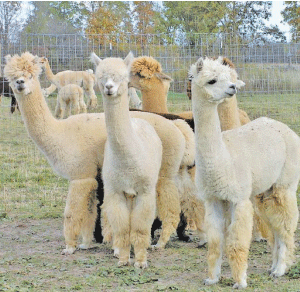
The Camel
A camel is an even-toed ungulated in the genus Camelus. It bears distinctive fatty deposits known as ‘humps’ on its back. Camels have long been domesticated and used as livestock. They provide food (milk and meat) and textiles (fibre and felt from hair). Camels are working animals, especially, suited to their desert habitat and are a vital means of transport for passengers and cargo.
The average life expectancy of a camel is 40 to 50 years. A full-grown adult dromedary camel stands 1.85 m (6 ft 1 in) at the shoulder and 2.15 m (7 ft 1 in) at the hump. Camels do not directly store water in their humps; they are reservoirs of fatty tissue. When this tissue is metabolised, it yields more than one gram of water for every gram of fat processed.
 |
| The Dromedary |
This fat metabolisation, while releasing energy, causes water to evaporate from the lungs during respiration (as oxygen is required for the metabolic process): overall, there is a net decrease in water.
Camels have a series of physiological adaptations that allow them to withstand long periods without any external source of water. The earliest known camel, called Protylopus, lived in North America 40 to 50 million years ago (during the Eocene age ).
It was about the size of a rabbit and lived in the open woodlands of what is now South Dakota. Thirty five million years ago, the Poebrotherium was the size of a goat and had many more traits similar to camels and llamas.
The hoofed Stenomylus, which walked on the tips of its toes, also existed around this time, and the long-necked Aepycamelus evolved in the Miocene age .
The Dromedary
The dromedary (Camelusdromedarius), is also known as the dromedary camel, Arabian camel, or one-humped camel, is the larger of the genus, with one hump on its back.
It is the tallest of the three species of the camel; adult males stand 1.8–2 m (5 ft 11 in – 6 ft 7 in) at the shoulder, while females are 1.7–1.9 m (5 ft 7 in – 6 ft 3 in) tall.
Males typically weigh between 400 and 600 kg (880 and 1,320 lb), and females weigh between 300 and 540 kg (660 and 1,190 lb). The species' distinctive features include its long, curved neck, narrow chest, a single hump (compared with two on the Bacterian camel and wild Bacterium camel), and long hairs on the throat, shoulders and hump.
 |
| Llamas |
The coat is generally a shade of brown. Dromedaries are mainly active during daylight hours. They form herds of about 20, and are led by a dominant male. They feed on foliage and desert vegetation.
They have several adaptations, such as the ability to tolerate losing more than 30 percent of their total water content which allows them to thrive in their desert habitat. Mating occurs annually and peaks in the rainy season; females bear a single calf.
Llamas
Llamas are sociable animals and live with others like a herd. Their wool is soft and contains only a small amount of lanolin. Llamas can learn simple tasks after a few repetitions.
The ancestors of llamas are thought to have originated from the Great Plains of North America about 40 million years ago. Although early writers compared llamas to sheep, their similarity to the camel was soon recognised. A full-grown llama can reach a height of 1.7 to 1.8 m (5 ft 7 into 5 ft 11 in) at the top of the head, and can weigh between 130 and 272 kg (287 and 600 lb).
The ears are rather long and slightly curved inward, characteristically known as ‘banana’shaped. There is no dorsal hump.
The feet are narrow, the toes being more separated than in the camels, each having a distinct plantar pad. The tail is short, and the fibre is long, woolly and soft.
Llamas are well-socialised and trained to halter and lead after weaning and are very friendly and pleasant to be around. Llamas have started showing up in nursing homes and hospitals as certified therapy animals.
Llamas which are bottle-fed or over-socialised and over-handled when young will become extremely difficult to handle when mature as they will begin to treat humans as they treat each other, which is characterised by bouts of spitting, kicking and neck wrestling.
Yashodhara Paranagama
9 H
Musaeus College
